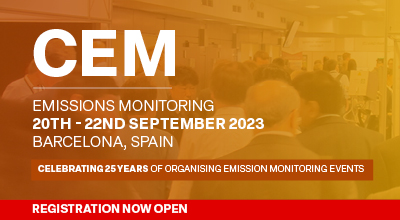| Abstract Title: | Mobile chasing measurement of on-road emissions of diesel trucks: Evidences of high NOX emissions from China IV vehicles |
| Presenter Name: | Dr Shaojun Zhang |
| Company/Organisation: | Cornell University |
| Country: | United States |
Abstract Information :
The measurement techniques of vehicle emissions have achieved substantial advances in recent years, which have spurred the progressive implementations of stringent emission regulations. Notably, portable emissions measurement systems (PEMSs) played an essential role in revealing the Volkswagen diesel emission scandal, and later have been adopted by the Real Driving Emission rules of the Euro 6 standard. However, although the PEMS testing method has the useful features, the expensive instrumental cost and long experimental duration may become limitations to measure emission factors of massive on-road vehicles. Thus, we see that the need for more cost-effective and fast-response vehicle emission measurement methods still remain, which should be capable of screening the fleet and identifying suspicious high-emitters.
In this study, we developed a mobile platform by equipping one Mini Van with a global positioning system data logger, a high-resolution camera, a hygro-thermograph, and a series of fast-response and high-accuracy air pollutant analyzers for measuring real-time concentrations of CO2, CO, NO/NOX, particle number, and black carbon (BC). For example, one Eco Physics Analysator (Model CLD66) was applied to record continuous NOX concentration profiles on the road, while one Aethalometer (Model AE-33) was used to measure real-time BC concentration. This mobile platform was used to chase from diesel trucks on highways and measure the concentrations of air pollutants in the exhaust plumes. During July and August 2017, we launched a large-scale field study in three provincial regions of China (e.g., Beijing, Tianjin and Hebei), in which nearly 400 trucks were measured by chasing on typical highways. According to the concentration elevation ratios of targeted pollutants to CO2 compared with road environmental baselines, fuel consumption based emission factors of individual trucks are estimated. Our preliminary results show the China IV diesel trucks could effectively reduce BC emissions than the older China III trucks. However, we could find no significant improvements in NOX emission factors for chased China IV diesel trucks compared with the China III counterparts. Both categories of diesel trucks have close average emission factors to each other, approximately 30 g NOX kg fuel-1 under the highway driving conditions (60 km h-1), although China IV vehicles should use selective catalytic reduction (SCR) devices to control NOX emissions. This finding is different from the previous studies in Europe that have provided sufficient proofs of the effectiveness of SCR in controlling highway NOX emissions. Therefore, the actual working conditions of SCR (e.g., detection of malfunctions, proper filling of urea) and enforcement of relevant regulations (e.g., in-use conformity check) in China should be seriously concerned.

